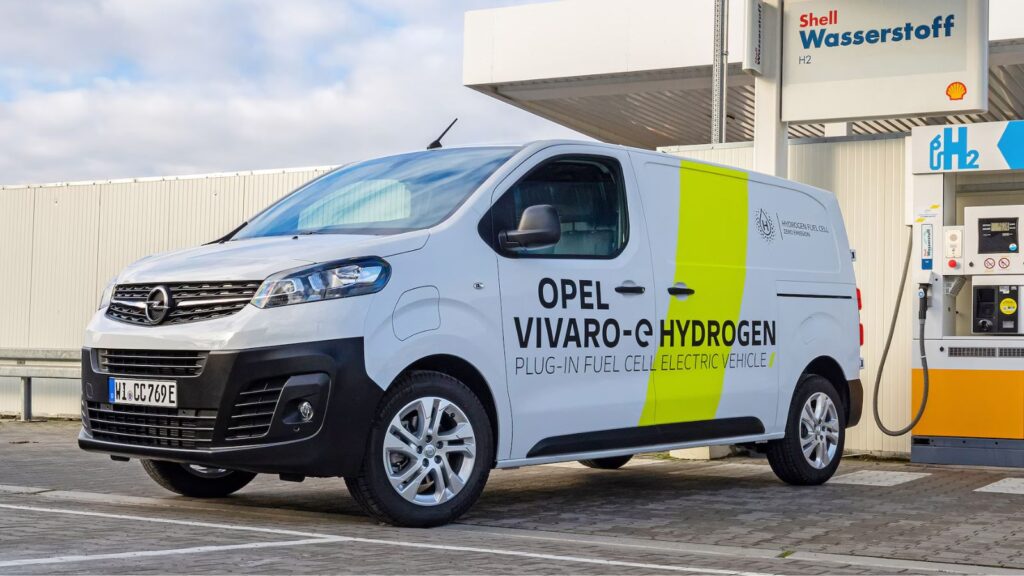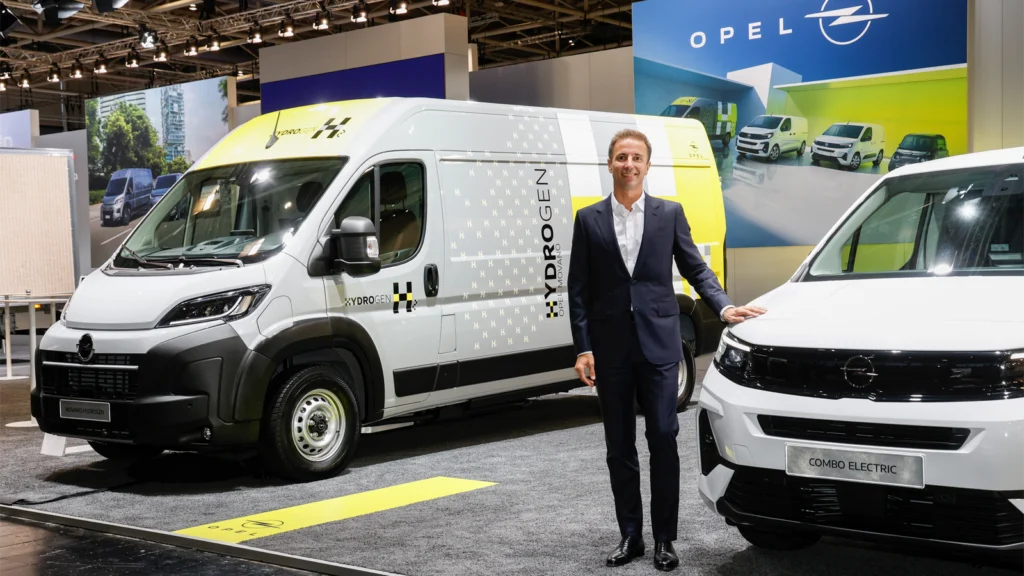Hydrogen vans: Symbio details how LCV users should switch to FCEVs despite initial costs

As stricter regulations are enforced on fleet managers of light commercial vehicles (LCV) regarding transport emissions, the demand for a cleaner solution increases.
With a need to switch from diesel vehicles, hydrogen fuel cell electric vehicles (FCEV) offer a promising alternative but there are some economic complications that come with it.
However, Symbio – a leading manufacturer of hydrogen fuel-cells – believes that FCEVs in the long term will be a worthwhile option that helps reduce fleet managers carbon emissions.
Initial purchase cost of hydrogen vans
Battery electric vehicles (BEV) and diesel vehicles are currently less expensive than FCEVs.
This is down to the cost of manufacturing fuel cells and hydrogen tanks, which require sophisticated materials and technologies, and unlike diesel and battery technologies, fuel-cells don’t yet have the same economies of scale.
Symbio, however, believes that as the FCEV production expands, the costs will decrease – and points out that many governments are offering subsidies and financial incentives to encourage the purchase of FCEVs.
With government support, whether through purchase incentives or tax credits, the initial cost should come down.
The costs involved with operating and maintenance of a hydrogen van
Currently, the price of hydrogen is higher than diesel and electricity because of the high cost in the production, transport and distribution of hydrogen, which is still in the development phase.
Symbio reckons that with the rapid increase in production and number of hydrogen refuelling stations available, the price of hydrogen will come down over the next few years.
As the demand increases and the production ramps up, the price of a FCEV should be similar to that of a BEC.
The maintenance cost of an FCEV is also far lower than a diesel vehicle.
FCEVs have fewer moving parts in their propulsion system – this reduces the risk of mechanical wear and eases any worries of needing frequent repairs.
They also require less maintenance with the battery system compared to a BEV, which means overall the FCEV has a lower maintenance cost which in turn helps fleet managers with their operation costs.
If you factor in the drop in operational cost of hydrogen, the FCEV becomes increasingly attractive from an economic point of view, particularly for commercial fleets operating over long distances.

The total cost of ownership of a hydrogen van
The total cost of ownership (TCO) of a vehicle takes into account everything; the initial purchase price, operating costs, maintenance costs, energy costs and resale costs of the vehicle.
The TCO of a FCEV is currently higher than a diesel vehicle and a BEC because of the initial purchase cost and price of hydrogen.
Fleet managers who operate short or urban routes are not favouring the FCEV, but this can all change as the hydrogen costs fall and the infrastructure develops.
Especially when the long-term TCO of a diesel vehicle is being increased by regulatory changes and increasing taxes on CO2 emissions.
BEC are ideal for short journeys but for fleet managers that require long and continuous operations, BEVs have limitations for longer distances due its reduced recharge time and range.
FCEVs offer longer range and faster refuelling time, reducing operational interruptions and increasing productivity.
For fleets that operate over long distances, this is crucial as the vehicle downtime is decreased which improves the overall TCO.
As the hydrogen fuel market increases in demand and the production process ramps up, alongside reductions in cost, the TCO of FCEVs will become far more attractive than any other alternative according to Symbio.
Transition to hydrogen: Infrastructure and costs involved
As well as taking into consideration the TCO, the initial purchase cost, operating and maintenance costs, fleet managers have to consider the infrastructure required for FCEVs.
There is a lack of public refuelling stations but there is an increasing demand for them and a number of countries across Europe, Asia and North America are funding the creation of hydrogen corridors with strategically-placed refuelling stations.
This aims to make the switch to FCEVs for companies easier and there is an increase in companies in logistics, transport and energy industries sharing costs of developing refuelling stations.
Unlike electric charging stations, one refuelling point will supply an entire fleet of vehicles unlike BEVs which need multiple charging points.
This reduces the infrastructure installation costs for FCEVs and maintenance costs compared to the alternatives.
Overall, the FCEV in the long-term could be the most attractive option requiring the prices drop and the production ramps up.
Symbio believes the price could potentially reach 4-5 pounds per kilogram in the coming years.









